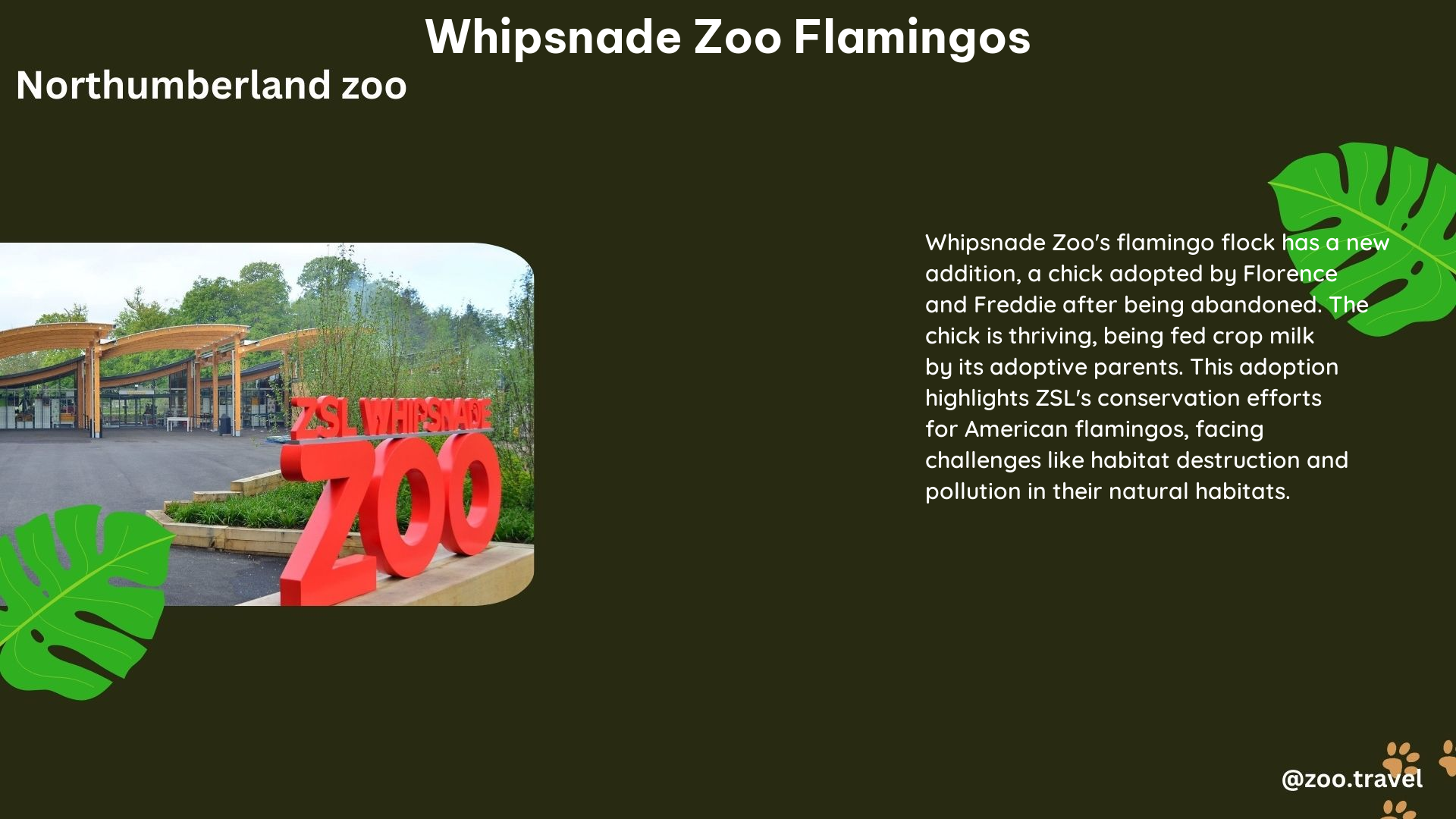Whipsnade Zoo, located in the United Kingdom, is home to a flamboyance of American flamingos (Phoenicopterus ruber). These vibrant birds are known for their long legs, S-shaped necks, and distinctive pink and orange feathers. Visitors to the zoo can observe the flamingos in their wetland habitat, where they engage in social behaviors such as feeding, preening, and displaying their impressive flight skills.
The Flamingo Nursery: Ensuring the Next Generation
The zoo has a dedicated bird nursery for incubating and hatching flamingo eggs, ensuring the survival of chicks when their natural parents are unable to care for them. In a recent incident, a flamingo chick was abandoned as an egg and spent a month in an incubator. The egg was then transferred to a nest, where it was adopted by a new flamingo couple, Florence and Freddie. The chick has been thriving under their care, bonding with its adoptive parents and exploring its new home.
Feeding the Flamingo Chicks: The Unique Crop Milk

Flamingo chicks are fed a bright red “crop milk” by both parents, which is produced in the linings of their digestive tracts and contains fat, protein, and blood cells. This unique feeding process provides the necessary nutrients for the chick’s growth and development.
Conservation Efforts at Whipsnade Zoo
Whipsnade Zoo is committed to the conservation of flamingos and their wetland habitats. The zoo’s parent organization, ZSL (Zoological Society of London), works to restore wetland environments across the globe, addressing threats such as habitat destruction, climate change, and water pollution. These efforts are crucial for the long-term survival of flamingos and other wetland-dwelling species.
Supporting Conservation through Visitor Experiences
Visitors to Whipsnade Zoo can support conservation work by purchasing items from the ZSL Shop, with proceeds directly contributing to ZSL’s conservation projects. The zoo also offers a range of experiences and events, providing opportunities for visitors to learn more about flamingos and other animals while supporting vital conservation efforts.
Flamingo Behaviors and Adaptations
Flamingos are known for their unique behaviors and adaptations that allow them to thrive in their wetland habitats. Some of the key behaviors and adaptations of the Whipsnade Zoo flamingos include:
- Feeding: Flamingos use their specialized, filter-feeding beaks to scoop up small aquatic organisms, such as shrimp, algae, and small fish, from the water.
- Flocking: Flamingos are highly social birds and often form large flocks, or “flamboyances,” for protection and social interaction.
- Nesting: Flamingos build their nests on mud mounds, which helps protect their eggs and chicks from predators and flooding.
- Thermoregulation: Flamingos have a unique ability to regulate their body temperature by adjusting the angle of their bodies and the amount of exposed skin.
- Coloration: The vibrant pink and orange colors of flamingos’ feathers are derived from the carotenoid pigments in the algae and crustaceans they consume.
Flamingo Conservation Challenges
While the flamingos at Whipsnade Zoo are thriving, their counterparts in the wild face a number of conservation challenges, including:
- Habitat Loss: Wetland habitats are being destroyed or degraded due to factors such as urbanization, agriculture, and climate change.
- Water Pollution: Contamination of water sources can negatively impact the availability of the flamingos’ food sources.
- Hunting and Poaching: Flamingos are sometimes hunted for their meat, feathers, or eggs, which can threaten their populations.
- Climate Change: Changing weather patterns and rising sea levels can disrupt the delicate balance of flamingo habitats.
Visiting Whipsnade Zoo and Supporting Flamingo Conservation
Visitors to Whipsnade Zoo can witness the beauty and wonder of the flamingos up close, while also learning about the important conservation work being done to protect these remarkable birds and their habitats. By supporting the zoo’s initiatives and purchasing items from the ZSL Shop, visitors can directly contribute to the ongoing efforts to safeguard the future of flamingos and other endangered species.
References:
– Whipsnade Zoo Flamingo Chick Adopted by New Parents
– ZSL Conservation Projects
– Whipsnade Zoo Flamingo Magnet
